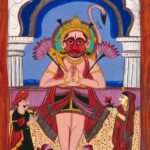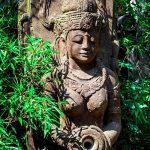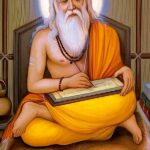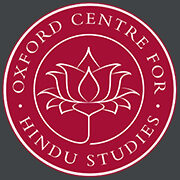Three Short Upanishads
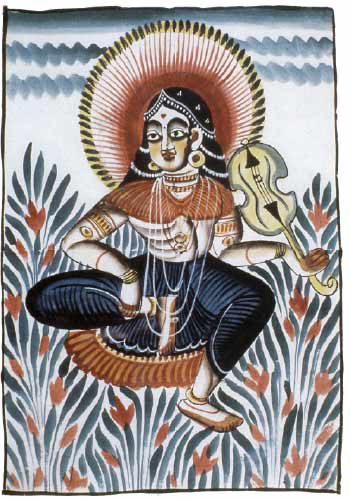
In this course, we take a look at 3 of the most important, yet shortest, Upanishads. Guided by a specialist tutor, students will study the Kena, Ishavasya, and Mandukya Upanishads. Students will be encouraged to reflect on the significance of these particular teachings and how they have formed contemporary Hindu culture and religion.
Throughout this course, we will be reviewing different passages from the Upanishads, their relevance to Hindu culture and religion and their influence on modern-day teachings. As these particular Upanishads are much shorter than others, we are able to thoroughly review and analyse the meanings behind each passage. Students are encouraged to comment and compare different passages from these Upanishads throughout the course. Discussion is also encouraged throughout the course, allowing students to fully engage with the course material. If you are interested in learning more about the Upanishads in a digestible format, this course is for you. Alternatively, you may like to look at our Vedas and Upanishads course.
Start Date: 18 January 2026
Course Duration: Seven Weeks
62 pages
On-Demand Video
The main video component of your course. On-demand means you can watch at the time that suits you.
4hr 18min
Community Discussions
These free Zoom sessions are not part of your main course materials. They are led by OCHS-affiliated scholars and open to students enrolled in any course.
Explore other areas of Hindu studies! Meet tutors and students from other courses!
Monday, 26 January, 12noon
Tuesday, 3 February, 2pm
Thursday, 12 February, 3pm
Saturday, 21 February, 5pm
Sunday, 1 March, 6pm
These are all UK times. Recordings are available for any sessions you miss
Session One: Introduction to the Kena Upanishad
The Kena Upanishad is an Upanishad of the Sama Veda and is to be found in the Talavakara or Jaiminiya branch of the Sama Veda. For this reason it is sometimes referred to as the Talavakara Upanishad. It forms a part of the Jaiminiya Brahmana of the Sama Veda (4.18-21) but is usually regarded by Hindu authorities as a separate work.
Session Two: Kena Upanishad (part two)
Chapter 2 is composed in verse form and presents a description of Brahman as the ultimate truth that lies behind all forms of existence. It also discusses the process of knowing Brahman as a means of attaining release from this world.
Session Three: Kena Upanishad (part three)
Chapters 3 and 4 adopt a narrative structure, though again the main purpose behind the discourse is the revelation of Brahman as the ultimate principle that transcends even the gods who are praised in the hymns of the Veda Samhitas. Here perhaps we get some indication of a Supreme Deity who possesses a personal identity, though this idea cannot be said to be prominent within the Kena Upanishad.
Session Four: Isha Upanishad (part one)
We move on to consider another of the most important Upanishads, the Isha or Ishavasya, and here we have full commentaries from both an Advaitic and a Vaishnava perspective, which will provide interesting parallels. Shankaracharya has left us a full commentary on all eighteen verses, whilst Swami Prabhupada, the founder of ISKCON, made his own commentary from a Vaishnava or dualist perspective.
Session Five: Isha Upanishad (part two)
This Upanishad seems to be about the inner Self as the ultimate principle, which can hence be referred to as God, the Isha. It is about the absolute transcendence of the Atman over the limitations that prevail in this world. And it is about moksha as the relief from suffering attained by one who can perceive the Atman. The final four verses are included to demonstrate that these ideas are not to be regarded as non-Vedic, for if one understands them properly then one can see that the Vedic hymns themselves are saying the same thing.
Session Six: The Mandukya Upanishad (part one)
We now consider the Mandukya Upanishad, which was also very highly regarded by Shankaracharya. The Mandukya Upanishad is significant for its revelation that the syllable ‘om’ is identical with Brahman, and today the omkara is often used to represent Hindu Dharma. Furthermore, Gaudapada wrote an extensive treatise or Karika on the Mandukya Upanishad in which we find an early exposition of the principles of Advaita Vedanta.
Session Seven: Mandukya Upanishad (part two)
In this session we will look at the final four verses of the Mandukya and then briefly consider Gaudapada’s Karika on it, which was very influential for Shankara in his establishing the doctrines of the Advaita Vada.
Associated Courses
Your Tutor

Dr Raj Balkaran
Dr Raj Balkaran is a scholar of Sanskrit narrative texts and the author of The Goddess and the King in Indian Myth (Routledge 2018), The Goddess and the Sun in Indian Myth (Routledge 2020). Having taught comparative religion and mythology at the University of Toronto School of Continuing Studies for a decade, he now Tutors at the Oxford Centre for Hindu Studies where he also serves on the Continuing Education Department’s Course Development Board. Alongside his academic training, he has received extensive spiritual training as part of an oral tradition dedicated to the transmission of Indian wisdom teachings. Integrating his academic and spiritual training, he has founded the online School of Indian Wisdom where he designs and delivers original online courses centred on the practical life wisdom to be found in the philosophical, mythological and spiritual traditions of ancient India. Beyond teaching and research, Dr Balkaran runs a thriving life consulting practice and hosts the New Books in Indian Religions podcast.
